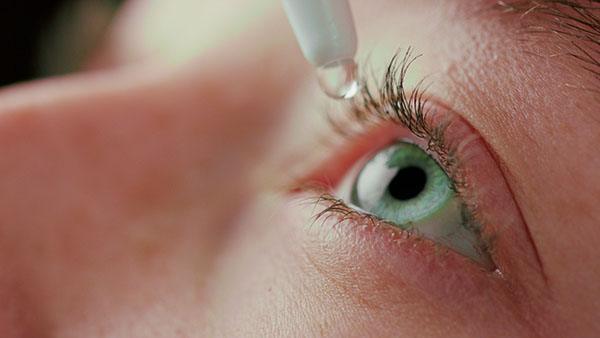Study: Methylene blue and near-infrared light show promise in preventing brain degradation
05/30/2025 / By Ava Grace

- A study has found that low-dose methylene blue and near-infrared light can protect neurons by boosting mitochondrial energy production, offering a potential treatment for neurodegenerative diseases like Alzheimer’s and Parkinson’s.
- Methylene blue enhances cellular energy by improving electron transport in mitochondria. Near-infrared light stimulates brain enzymes, increasing oxygen delivery and neuron survival without being invasive.
- Both therapies have repurposed uses. Methylene blue was previously used for malaria, and red light therapy, once doubted, now has clinical backing for brain health.
- Clinical trials show improvements in depression, stroke recovery and memory, with minimal side effects due to hormetic principles.
- Despite promising results, regulatory and pharmaceutical industry hurdles slow adoption. But if embraced, these cost-effective, non-drug therapies could revolutionize neurology.
In an era where neurodegenerative diseases like Alzheimer’s and Parkinson’s are on the rise, a groundbreaking discovery offers hope. Researchers have found that low-dose methylene blue – a century-old dye – and near-infrared light can protect neurons from degeneration by boosting cellular energy production.
These interventions, backed by rigorous scientific studies, target mitochondria, the powerhouses of cells, to enhance brain function and slow cognitive decline. This breakthrough could revolutionize treatment for millions suffering from brain disorders without relying on Big Pharma’s expensive and often ineffective drugs.
At the heart of this discovery is the mitochondria, the tiny engines inside cells that produce energy. When these engines fail, neurons degenerate, leading to diseases like dementia. But researchers have found two unconventional ways to supercharge mitochondrial function.
Methylene blue, first developed in 1876 as a textile dye, has a unique ability to donate electrons to mitochondria. At low doses, it enhances the electron transport chain – the process cells use to generate energy. Studies show it increases oxygen consumption in brain cells, improving metabolic efficiency and protecting against neurodegeneration.
Unlike harsh pharmaceuticals, near-infrared light penetrates the skull and energizes mitochondria by stimulating cytochrome oxidase, a key enzyme in energy production. This non-invasive therapy increases blood flow and oxygen delivery to the brain, promoting neuron survival.
Methylene blue isn’t new; it was used to treat malaria during World War I and later methemoglobinemia, a blood disorder. But its potential to help maintain brain health was overlooked until recent studies revealed its neuroprotective effects. Similarly, red light therapy – once dismissed as pseudoscience – is now validated by clinical research.
Red and blue: Working together for mitochondrial function
Both treatments share a common mechanism: They enhance mitochondrial respiration, the process that keeps neurons alive. Unlike high-dose drugs that often cause side effects, these interventions follow a hormetic principle: Low doses are beneficial, while high doses can be harmful.
Methylene blue (0.5 to four milligrams per kilogram) safely crosses the blood-brain barrier, increasing ATP (cellular energy) and reducing oxidative stress. Meanwhile, near-infrared light (particularly specific wavelengths like 1,064 nanometers) penetrates deep into brain tissue, improving memory and cognitive function.
Clinical trials show remarkable results for the following:
- Depression and bipolar disorder: Low-dose methylene blue improved symptoms in treatment-resistant patients.
- Stroke recovery: Near-infrared light enhanced neurological recovery.
- Memory enhancement: Both therapies boosted cognitive performance in healthy individuals.
With an aging population and skyrocketing rates of dementia, conventional medicine has failed to deliver effective cures. These therapies offer a drug-free, cost-effective alternative – something rarely championed in today’s profit-driven healthcare system. (Related: 7 Conditions masquerading as dementia.)
Despite promising results, mainstream medicine remains skeptical. Regulatory hurdles and lack of Big Pharma interest slow progress. Yet, as more studies confirm their efficacy, these treatments could shift the paradigm in neurology.
In a time when medical breakthroughs are often tied to expensive, patented drugs, methylene blue and near-infrared light stand out as accessible, science-backed solutions. They embody conservative principles: Leveraging proven science, minimizing government overreach and empowering individuals to take control of their health. For people suffering from brain disorders or simply seeking to protect their cognitive future, this research offers real hope.
Watch this video that outlines 10 reasons to start taking methylene blue.
This video is from the Global Citizens channel on Brighteon.com.
More related stories:
From textile dye to potential wonder drug: “The Ultimate Guide to Methylene Blue” by Mark Sloan.
Methylene blue: An emerging contender in the battle against cancer.
Sources include:
Submit a correction >>
Tagged Under:
alternative medicine, Alzheimer's disease, Brain, brain damaged, brain degradation, brain function, cognition, Cures, disorder dementia, mental, methylene blue, Mind, near-infrared light, neurodegenerative, Parkinson's Disease, red light therapy, remedies, research
This article may contain statements that reflect the opinion of the author





















